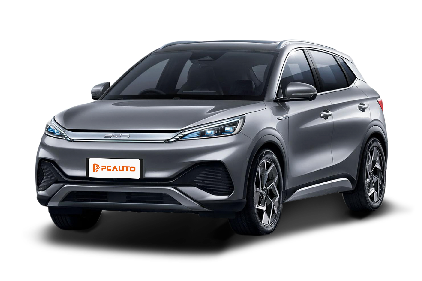Q
byd atto 3 how to open door from inside
To open the door of the BYD Atto 3 from inside, you typically use the interior door handle. On the driver's side, you'll find a prominent handle that can be pulled to open the door. The rear doors also have clearly visible handles, and the operation is the same. Make sure the vehicle is stationary and secure before attempting to open the door to ensure safety.
Special Disclaimer: This content is published by users and does not represent the views or position of PCauto.
Related Q&A
Q
What Segment is BYD Atto 3?
The BYD Atto 3 belongs to the C-segment market. In the automotive field, C-segment vehicles typically include compact sedans or SUVs. These types of models strike a balance between size, practicality, and performance, meeting the needs of daily use and families. The Atto 3 has a body size of 4,455 mm in length, 1,875 mm in width, and 1,615 mm in height, with a wheelbase of 2,720 mm. These figures clearly position it within the C-segment car category. Its five-seater layout and 440-liter trunk volume make it suitable for both family outings and daily commutes. Meanwhile, the vehicle's performance and configuration features meet the standards expected of a C-segment car. Whether it's navigating through the city or taking a long-distance drive, the Atto 3, thanks to its C-segment positioning, perfectly combines functionality and ease of handling.
Q
What is the Reslae Value of BYD Atto 3?
As a pure - electric SUV, the second - hand resale value of the BYD Atto 3 in the Malaysian market is influenced by brand influence, the maturity of electric vehicle technology, and local market demand. Currently, its resale value rate is at a medium level and shows stable performance compared with electric vehicles in the same class. BYD, as a globally leading new - energy vehicle brand, enjoys high market recognition for its battery technology and overall vehicle quality, which helps to enhance the long - term resale potential of the Atto 3.
In recent years, the Malaysian government has actively promoted the popularization of electric vehicles, including offering tax incentives and building charging facilities. These policies indirectly support the second - hand market value of electric vehicles. It should be noted that the resale value of electric vehicles is usually slightly lower than that of fuel - powered vehicles, but as the technology becomes more widespread and the infrastructure improves, this gap is narrowing.
For consumers considering purchasing the Atto 3, in addition to focusing on the second - hand value, they should also take into account its low operating costs, environmental - friendly features, and the Malaysian government's long - term support policies for electric vehicles. These factors can enhance the overall value of using the vehicle. It is recommended to check the specific vehicle condition and the latest market situation through official channels or authoritative second - hand car platforms before buying a car to get a more accurate valuation reference.
Q
What is the PCD Size of BYD Atto 3?
The PCD (Pitch Circle Diameter) of the BYD Atto 3 is 5×114.3 mm. This is a common wheel bolt hole pitch specification for many mainstream models in the Malaysian market, suitable for pairing with 17 - or 18 - inch wheels. PCD is an important parameter for wheel installation, representing the diameter of the circle formed by the bolt holes and the number of holes. Selecting the correct PCD can ensure a perfect match between the wheels and the vehicle's axle hub. For Malaysian car owners, when they need to replace or upgrade the wheels, besides the PCD, they also need to pay attention to the center bore (CB) size and the offset (ET value). These data jointly affect the wheel's compatibility and driving stability. As a pure - electric SUV, the wheel design of the BYD Atto 3 combines aesthetics with low wind resistance, which helps to improve the vehicle's range performance. Correct wheel specifications can also ensure the normal operation of the suspension system and driving safety. If car owners have modification needs, it is recommended to consult professional technicians or refer to the official manual to avoid potential safety hazards caused by non - compliant specifications.
Q
Does BYD Atto 3 Support Apple Carplay?
The BYD Atto 3 does not come with native support for Apple CarPlay. However, some users have managed to access similar features through third-party solutions or by connecting via Bluetooth.
As a smart electric vehicle, the Atto 3 runs on BYD’s own DiLink system. This platform offers features like voice control, navigation, and entertainment. While it operates differently from Apple CarPlay, it still provides a user-friendly in-car experience.
For Malaysian drivers, the features available may vary slightly depending on the local version. We recommend checking with your dealer for the most up-to-date information before making a purchase.
Many car buyers pay close attention to Apple CarPlay and Android Auto compatibility. Each system has its strengths. DiLink is tightly integrated with the car’s hardware, giving you control over more vehicle functions. CarPlay, on the other hand, works seamlessly with iPhones and the wider Apple ecosystem.
Your choice may come down to personal preference. If you rely heavily on your smartphone for navigation and media, CarPlay might be essential. But if you prefer a built-in system with more control over the vehicle, DiLink has its own appeal.
As automotive tech continues to evolve, more brands may improve system compatibility to meet user expectations.
Q
What is the Tyre Brand of BYD Atto 3?
The original-equipped tire brands of the BYD Atto 3 in the Malaysian market may vary depending on different versions or market configurations. However, common matching tires include well - known international brands such as Giti or Chaoyang. It is recommended to refer to the official information provided by local dealers for the specific configuration.
As the only part of the vehicle that contacts the road surface, tires are crucial for driving safety, handling, and comfort. When choosing tires, it is necessary to pay attention to parameters such as the wear index, wet - grip performance, and noise - reduction performance. Malaysia has high temperatures and heavy rainfall throughout the year. It is recommended that car owners give priority to tires with good drainage and high - temperature aging resistance, and regularly check the tire pressure and wear conditions to ensure driving safety.
If tire replacement is needed, climate - adaptable products from brands like Michelin and Bridgestone can be considered. At the same time, it is important to keep the tire treads on the front and rear axles consistent, which is especially important for electric vehicles with large torque output.
Q
Is BYD Atto 3 a Good Car? Learn the Pros and Cons Here
As a pure - electric SUV, the BYD Atto 3 has performed outstandingly in the Malaysian market. Its advantages include a cruising range of up to 480 kilometers (WLTP standard), which makes it suitable for daily commuting and long - distance trips. Meanwhile, the blade battery technology it is equipped with is well - known for its high safety and stability. The 12.8 - inch rotating central control screen and DiLink intelligent system inside the vehicle enhance the sense of technology and practicality. In terms of space, it is also spacious enough, making it suitable for family use.
However, its charging speed is a bit slower compared to some competitors. It takes about 40 minutes to charge to 80% in fast - charging mode. Also, the suspension adjustment is on the stiffer side, which may affect comfort. For Malaysian users, the BYD Atto 3 offers great value for money. It is especially suitable for consumers who focus on environmental protection and technological features. But it is recommended to take a test drive to confirm whether the suspension performance meets personal preferences.
In addition, the Malaysian government offers tax incentives for electric vehicles, such as exemptions from import and sales taxes, which further reduces the vehicle purchase cost. Moreover, BYD's gradually expanding local charging network also alleviates range anxiety, making it worthy of comprehensive consideration for potential buyers.
Q
What is the Width of BYD Atto 3?
The body width of the BYD Atto 3 is 1,875 millimeters. This dimension represents a relatively wide design among compact pure - electric SUVs, offering more spacious seating and better driving stability. It's a great fit for Malaysian family users. As a pure - electric vehicle, the Atto 3 not only boasts excellent range performance but also comes equipped with a rich array of intelligent technology features, such as the DiLink intelligent connectivity system and L2 - level driving assistance functions, delivering a more convenient experience for drivers.
In addition, its wide - body design enhances the interior lateral space, making it especially comfortable when three adults sit in the back row. Meanwhile, the larger wheelbase helps the vehicle stay stable at high speeds. For Malaysian consumers, the width of the Atto 3 might require a bit more attention when navigating narrow roads or parking in tight spots in the city. However, overall, this design better meets local users' needs for space and practicality. Coupled with its environmental - friendly and energy - efficient features, it's a worthy choice of electric SUV.
Q
What is the Road Tax Price of BYD Atto 3? How to Calculate?
As a pure electric vehicle, the BYD Atto 3 enjoys a road tax exemption provided by the Malaysian government. Currently, its road tax is RM20, which is calculated according to the unified rate set by the Malaysian Road Transport Department (JPJ) for electric vehicles. This is different from the way traditional fuel - powered vehicles are charged based on engine capacity. The calculation method for the road tax of electric vehicles is relatively simple. There's no need to consider the displacement factor, and instead, a fixed rate is directly applied. This is also a policy support from the government to promote green travel.
For car owners who want more detailed information, they can log in to the JPJ's official website or go to the counter to inquire about the latest policies, as the road tax incentives for electric vehicles may change with government policy adjustments. It's worth mentioning that in addition to road tax incentives, electric vehicle owners in Malaysia can also enjoy multiple benefits such as import duty and consumption tax exemptions, and subsidies for charging facilities. These measures aim to reduce the cost of using electric vehicles and accelerate their popularization.
As the Malaysian government plans to achieve the goal of electric vehicles accounting for 15% of new car sales by 2030, more incentive policies may be introduced in the future. Therefore, it is recommended that car owners regularly follow the announcements of JPJ or MITI to get the latest information.
Q
What is the Second Hand Price of BYD Atto 3? Check Used Price Here
In Malaysia, the second - hand car prices of the BYD Atto 3 are affected by factors such as vehicle age, mileage, vehicle condition, and configuration. Currently, the prices in the second - hand market are approximately between 80,000 and 120,000 ringgit. The specific price needs to be evaluated based on the actual situation of the vehicle. As a pure - electric SUV, the BYD Atto 3 maintains a relatively high resale value in the second - hand market, thanks to its e - Platform 3.0 technology, a driving range of up to 480 kilometers (WLTP standard), and a rich suite of intelligent features.
It is advisable to check for specific vehicle sources through the official certified pre - owned vehicle channels or reliable platforms before purchasing. At the same time, pay attention to checking the battery's health status and warranty period. The Malaysian government offers preferential policies such as import duty and road tax exemptions for electric vehicles, which indirectly enhances the competitiveness of electric vehicles in the second - hand market.
If you're considering buying a second - hand electric vehicle, you also need to understand the distribution of charging facilities and the installation conditions for home charging to ensure convenience during subsequent use.
Q
What is the Tyre Pressure of BYD Atto 3?
The recommended standard tire pressure for the BYD Atto 3 usually ranges between 2.3 and 2.5 bar (approximately 33 to 36 psi). The specific value may vary slightly depending on the vehicle configuration or tire model. It is recommended to refer to the owner's manual or the tire pressure label on the door frame for accurate information. In Malaysia's tropical climate, the tire pressure will increase slightly as the temperature rises. Therefore, just inflate the tires to the recommended value when they are cold to avoid over - inflation due to overheating.
Regularly checking the tire pressure can not only enhance driving safety and comfort but also extend the tire life and optimize energy consumption. Especially for electric vehicles, proper tire pressure helps maintain the cruising range. If you often carry heavy loads or take long - distance trips, you can consider increasing the rear tire pressure by 0.1 to 0.2 bar. However, be careful not to let the tire pressure difference across the whole vehicle be too large.
It is recommended to check the tire pressure at least once a month and use a digital tire pressure gauge to ensure the accuracy of the measurement. Also, don't forget to check the status of the spare tire in case of emergencies.
Latest Q&A
Q
Can you program a 2018 VW Jetta at home?
Regarding the programming issues of the 2018 Volkswagen Jetta, it's possible to do the programming at home, but it requires professional equipment and knowledge. Usually, it's recommended to use the official or certified ODIS (Offboard Diagnostic Information System) software in conjunction with the VAS diagnostic tool. These tools can access the vehicle's ECU (Electronic Control Unit) for coding or adaptation, such as adjusting the lighting settings, start - stop function, or instrument display. However, for critical programming related to the engine, transmission, or safety system, it's advisable to go to an authorized service center, as improper operation may lead to system malfunctions or affect the warranty.
In Malaysia, many professional auto repair shops or modification studios also offer such services at relatively reasonable prices. If you lack experience, seeking professional help is safer. Moreover, before programming, make sure the vehicle's battery voltage is stable to avoid system errors caused by interruptions. Also, some functions may be restricted by local regulations, and you need to comply with the rules of JPJ (Malaysian Road Transport Department) during modification.
If you want to learn more about automotive electronic systems, you can study the basic principles of the OBD - II interface, which is the foundation for modern vehicle diagnosis and programming. But always remember that complex operations still require the assistance of professionals.
Q
Does the 2018 Jetta have Apple CarPlay?
The 2018 Volkswagen Jetta is indeed equipped with Apple CarPlay. This feature allows drivers to seamlessly connect their iPhones to the car's infotainment system, enabling them to use common apps such as navigation, music, and calls, thereby enhancing driving convenience and entertainment experience. This function is especially useful for Malaysian users. Given the complex local traffic conditions, real - time navigation and hands - free calling can significantly improve driving safety.
In addition to Apple CarPlay, the 2018 Jetta may also support Android Auto to meet the needs of different smartphone users. Its infotainment system usually integrates functions such as Bluetooth connectivity, USB ports, and voice control, further enhancing the vehicle's technological appeal.
It should be noted that the specific functions may vary slightly depending on the vehicle configuration or regional versions. It is recommended to confirm the detailed specifications with local dealers before purchasing a car. Meanwhile, the hot and humid climate in Malaysia places certain requirements on the durability of in - vehicle electronic devices. Regular maintenance and avoiding long - term exposure to sunlight can help extend the system's lifespan.
Q
What is the safety rating of the 2018 Volkswagen Jetta?
The 2018 Volkswagen Jetta has a strong safety performance record. It received high ratings in multiple Insurance Institute for Highway Safety (IIHS) crash tests, including 'Good' scores in the moderate overlap front and side impact tests. Its performance was particularly strong in the moderate overlap front test, side impact test, and it maintained good structural integrity in the small overlap frontal tests. It typically came standard with essential active safety features such as electronic stability control (ESC) and an anti-lock braking system (ABS). For Malaysian consumers, while the exact standard safety features may vary slightly from the U.S. market specifications, the Jetta's core safety engineering and design are robust and trustworthy. This includes features like a high-rigidity passenger safety cell and multiple airbags (often including front, side, and curtain airbags depending on the trim level). It is important to note that official safety ratings (like IIHS or ASEAN NCAP) can vary based on specific market configurations and the testing protocols of different agencies. Therefore, it is highly recommended to consult the ASEAN NCAP safety ratings or local Malaysian safety evaluations for the most relevant information before purchase. Beyond the vehicle's inherent safety features, consumers should also prioritize regular maintenance and tire condition, as these are critical factors for real-world safety. Ultimately, even the most advanced safety systems require responsible driving habits to achieve their full protective potential.
Q
What motor is in a 2018 Volkswagen Jetta?
In 2018, the Volkswagen Jetta in the Malaysian market was mainly equipped with a 1.4-liter TSI turbocharged four-cylinder gasoline engine. This engine uses direct injection technology, with a maximum output power of 150 horsepower and a peak torque of 250 Newton-meters. It is paired with a 6-speed manual or 8-speed automatic transmission, providing a smooth driving experience and good fuel economy.
This engine belongs to Volkswagen's EA211 series and is known for its lightweight design and high efficiency. It is suitable for both city commuting and long-distance driving. It's worth mentioning that the turbocharging technology can provide abundant torque at low speeds, making overtaking easier. At the same time, the TSI engine also takes environmental protection into account and meets the Euro 6 emission standards.
For Malaysian consumers, the power of the 1.4 TSI is more than enough. Moreover, the maintenance cost is relatively reasonable, and the parts supply is also abundant. Among vehicles in the same class, small-displacement turbocharged engines like this have become a trend. They can not only meet the power requirements but also reduce the road tax burden, which is very suitable for the road conditions and vehicle usage environment in Malaysia.
Q
How do I turn off the inspection light on my VW Jetta 2018?
To turn off the check light on the 2018 Volkswagen Jetta, you can follow these steps: First, make sure the vehicle is turned off. Then, press and hold the "0.0" button on the dashboard (on some models, it might be the "SET" or "Reset" button). Next, turn the ignition switch to the "ON" position (without starting the engine). Keep holding the button until the dashboard shows a prompt like "Are you sure you want to reset the maintenance service data?" or something similar. Finally, release the button and press it briefly again to confirm and complete the reset.
It's important to note that Jettas from different years or with different configurations may have slight differences in the operation details. It's recommended to refer to the vehicle's user manual to confirm the specific steps. For Malaysian car owners, regular maintenance is crucial because the high temperature and humidity in the tropical climate can accelerate the aging of vehicle components. Resetting the maintenance light in a timely manner not only ensures the normal operation of the reminder function but also helps maintain the vehicle in its optimal condition.
If the check light still stays on after you've done the reset yourself, it's possible that the vehicle has detected other system issues that need attention. In this case, it's advisable to contact a Volkswagen - authorized repair center as soon as possible for professional diagnosis to avoid affecting driving safety.
View MoreRelated News

BYD ATTO 3 Interior Malaysia: Where Simplicity Meets Smart Technology
LienJul 22, 2025

BYD has Launched a K-Car Targeting the Japanese Market, Aiming to Challenge Local Automotive Brands
AshleyMay 20, 2025

Only BYD Can Surpass Itself: FangChengBao Tai 3 Launches in China, Better Than Atto 3
MichaelApr 18, 2025

BYD Announces Entry into the Czech and Slovak Markets, Plans to Open Over 50 Stores
WilliamApr 17, 2025

BYD Denies Rumors of ¥10 Billion Investment in Factory in India
JamesApr 1, 2025
View More

















Pros
Cons